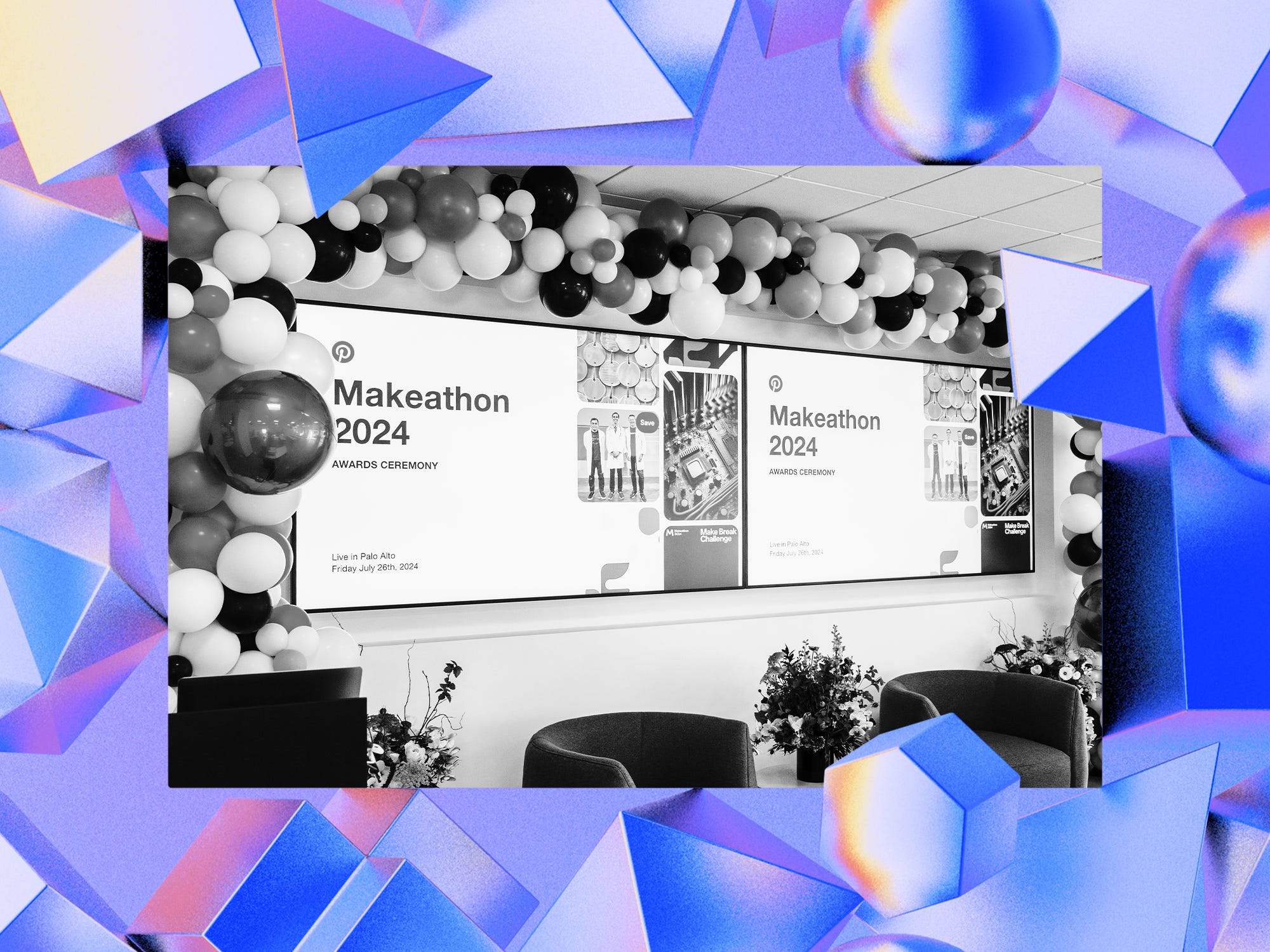
Pinterest; Karan Singh for BI
As companies look to AI for increases in productivity, some employees are wary. They worry about lost jobs, diminished creativity, and ethical oversteps, leaving many repelled by daily AI use.
Pinterest, a social media company with about 4,700 employees, has sought to address such concerns by keeping employees closely involved in the development of internal AI tools so those tools are viewed as efficient and helpful, not just mandated from the top down. Key toward this mission has been Pinterest’s annual Makeathon, which is in its 14th year. The employee-led competition used to be viewed mostly as a fun way to recommend fixes, said Anirudh Koul, Pinterest’s generative AI tech lead. Now, in the age of AI, its usefulness has exploded.
“The overarching goal is ground-up innovation,” Koul told Business Insider. “We realized that if we can give the employees the opportunity and freedom to tell us what must be done, and give them some space to showcase working proof of their concept, we might find new innovations at a much faster rate.”
Inside Pinterest’s companywide hackathon
Makeathon is Pinterest’s version of a hackathon — an event at which people work together to create new software quickly. Hackathons are designed to spark new ideas and increase employee engagement, said Brandon Kessler of Devpost, a digital platform for running hackathons. Since 2022’s AI boom, hackathon demand has exploded, Kessler told BI.
Discussing hackathons’ appeal, Kessler said the events “get people excited because they get to build something they want, as opposed to, ‘Hey, all, please use this tool.'”
“You get people learning these new tools,” he continued, “building stuff that helps the business, and collaborating and having fun — all within a short period of time.”
Pinterest employees witnessed this type of quick development in early 2023, just a few months after ChatGPT‘s release. Pinterest’s senior director of engineering, Anthony Suarez, helped collect a handful of engineers to have a mini hackathon which led to the creation of an internal chatbot tool. By their official Makeathon in July, Pinterest’s now-foundational plug-in AI system was ready for wider use.
At Pinterest, hackathon projects start at an internal company page where employees across departments can log pitches. In the week before Makeathon, Koul’s team hosts classes about how generative AI works and how to write prompts. There’s also a class on no-code tools for app building so that nontechnical employees can still employ AI solutions.
Then, teams from across departments form around an idea. Suarez collaborated with seven Makeathon teams last cycle, mostly composed of fellow employees he had never worked with before. They also have the support of Koul’s “hack doctors,” support staff who work across the company and specialize in areas such as engineering, design, and video editing. The hack doctors help refine ideas and prepare teams to take questions from executives. Last year, just under 94% of teams worked with a hack doctor.
“We usually find that a good chunk of participants are actually not from engineering,” Koul said. “They pair up with engineers to bring their ideas to the next level. We’ve had teams where people from six different countries come together.”
Each team produces a video pitch, which colleagues up to the executive level can watch and vote on. Makeathon is strategically scheduled for late summer so any resulting tools can be incorporated into Pinterest’s companywide planning period in September and October, Suarez told BI. He estimated that more than half of these Makeathon projects get funded during this cycle and called the event an “innovation flywheel.”
How a Makeathon idea becomes an AI-tool reality
During the 2023 Makeathon, one of Pinterest’s sales employees had an idea: What if AI could collect and search through all the company’s internal documents?
The sales employee recruited a 14-person team, including Charlie Gu, a senior engineering manager on Pinterest’s data team. Gu said he envisioned the tool as a Slack-based chatbot employees could turn to instead of bugging their colleagues. The team knew, however, that some existing documentation wouldn’t be up to date when the chatbot pulled it in.
“We came up with a system where you can report answers and create new documentation on the fly,” Gu said. The team pitched, built, and eventually implemented the document finder across the company.
The tool now answers, on average, an estimated 4,000 questions a month, according to Pinterest. The tool was also designed to access thousands of internal documents from Google Docs, Slack threads, and slide decks, said Koul, who is quite passionate about Makeathon. (He called over shaky service at a Mount Everest base camp to rave about it.)
Makeathon also encouraged some employees to come up with useful AI prompts. In 2024, Koul’s team posed a challenge: Who could come up with the best questions to get Pinterest’s chatbot to produce the most accurate and precise answers? Gu said that they had about 200 participants.
In this case, the employees’ prompt generation helped with Pinterest’s overall goal of encouraging employee engagement with AI. The effort also led Pinterest to integrate AI agents into the process of writing more precise prompts.
According to internal company surveys, 96% of Suarez’s team of more than 60 use generative AI every month, and 78% of the company’s 1,800 engineers report time savings from using internal AI tools.
Suarez said he’d been “quite surprised by the positive feel” for the tools across the business, adding: “Part of that is, we didn’t force adoption of these tools early on, and we still aren’t saying, ‘You have to do this.’ We’re trying to come at this more from creating value.”
The post When Pinterest needs new AI tools, employees can have a part in creating them appeared first on Business Insider.




